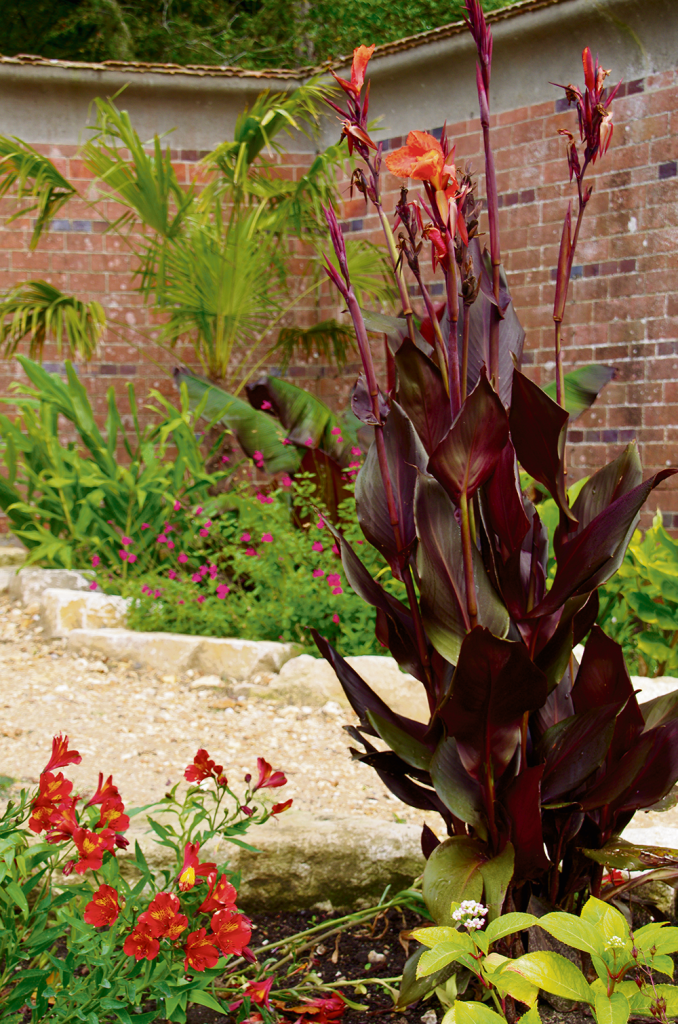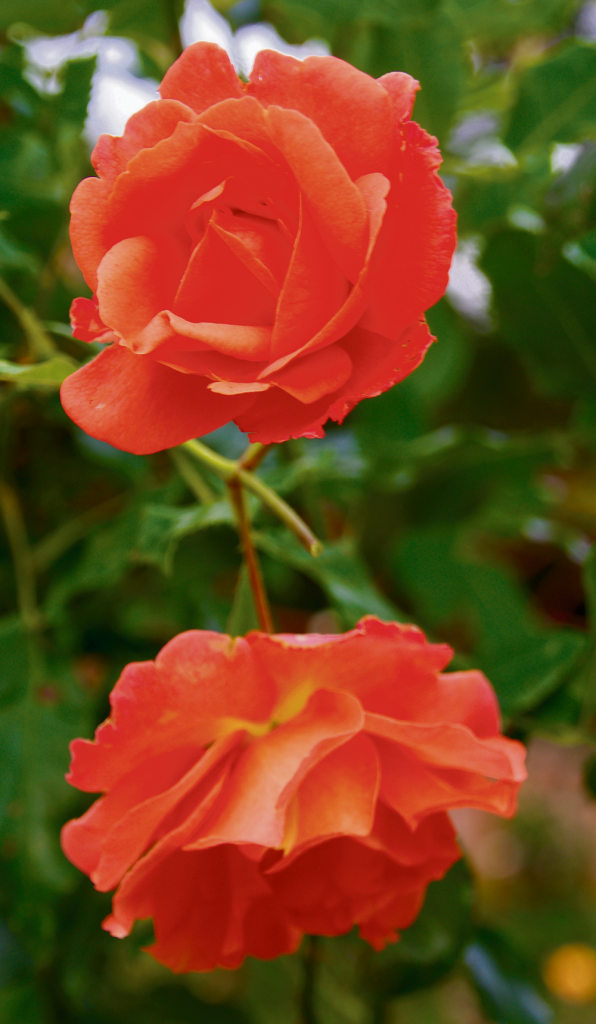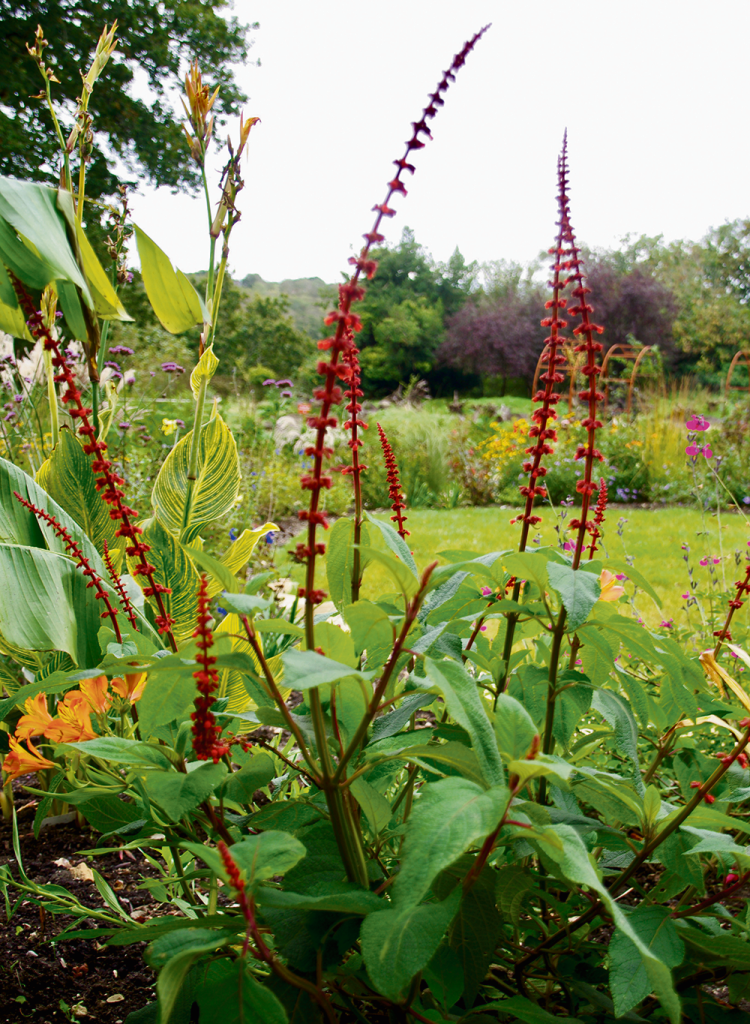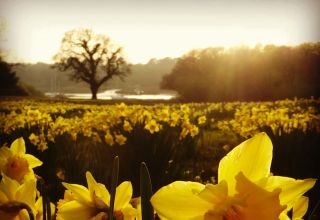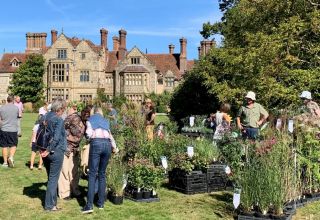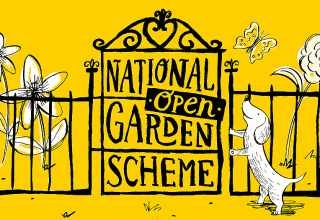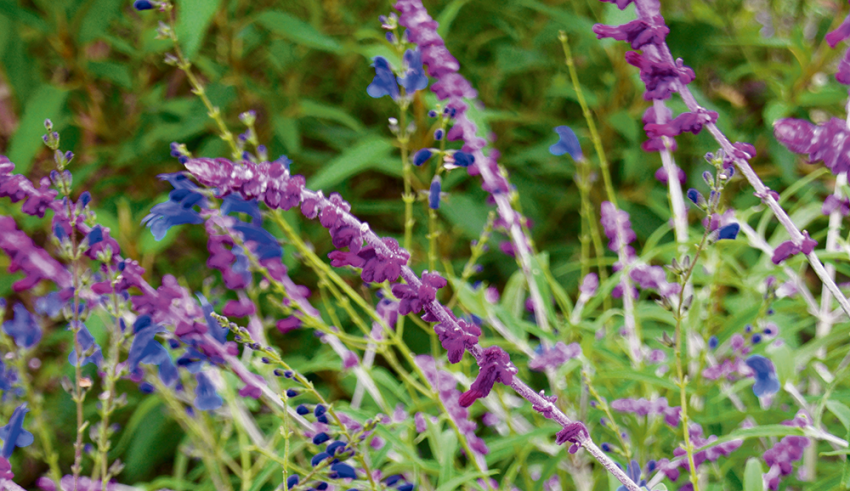
Emma Harris-Curtis-Monahan meets the head gardener of Dorset’s Carey’s Secret Garden, Paul Scriven, whose love affair with nature exudes from every corner of the garden
Carey’s Secret Garden, outside Wareham, focuses enthusiastically, entirely and explicitly on restoration and replenishment of nature and every generation’s connection with it.
Paul Scriven, head gardener, embodies this philosophical approach and when we meet he is among the dahlias; a kaleidoscopic backdrop of salvias, late roses and rudbeckia behind him, offering the horticultural promise of ensuing years.
Yet, Carey’s Secret Garden is unusual. Simon Constantine, famous perfumer creator of the popular änd fragrance has a clear vision, “this garden’s for everyone’” he smiles, “it’s inclusive”.
One could exchange inclusive for embracing. Maybe it’s those expansive red brick walls, like two strong arms, opening up and proffering the garden to those who venture through that restored brick arch with its gothic, ornate pillars. The diapering of the brick pattern is extraordinary and, to date, no brick specialist has identified the precise style. This just reinforces the atmosphere; everything is unusual here. Rather than a four-sided walled garden, the fan of wall faces south, nurturing figs, soft fruit, banana and a heady diversity of scented leaf pelargoniums such as attar of roses, mabel grey and peppermint lace.
Paul and Simon are passionate about odoriferous stock and are ambitious for the aromas of future years. Right now, visitors can carry these scents with them, infusing their skin and clothes by rubbing those powerfully aromatic leaves as they meander.
Working closely with a modest team of part-timers, Paul and his long-standing collaborator in all things horticultural, Dan, are “…entirely complementary. He does the plans, I am the plantsman”, chuckles Paul. Together, they met Simon some years ago, as gardeners in the latter’s home. Paul had previously accumulated 30 years of gardening knowledge and experience and Simon “liked their ethos”.
When in 2018 the site was acquired by Simon’s family, they knew they wanted to create something special; a showpiece blending nature-oriented, sustainable gardening devoid of chemical input, focused on recycling, low watering, self-propagated stock and scented and medicinal plants. There was a desire to sell the vegetables, herbs and cut flowers grown by the team, to bring joy and connection to nature to visitors.
Moreover, of pre-eminent importance to Paul and the team is to entice everyone, especially children, to revel in their inner wild; that innate and inexorable place within nature which we all hold.
None of them realised the size of the challenge at the garden, however, “The scale!” exclaims Paul, gasping in recollection, and they burst into laughter. Dan hired a drone to photograph what was already there and it helped in the designs. They wanted to use the history to their advantage, so asked the previous guardians of the gardens for old photographs and details.
Taking what existed as a base, Dan designed the garden in consultation with Paul and Simon and the ideas have already evolved in the two years since the garden’s inception. Paul says, “So many people say, …’last time I was here I was being chased out by the Farmer!’” Local people treasure this wild space. This sense of adding to history, rather than eradicating it, is omnipresent, such as the fruit cage supine against the wall, once again, producing heavy crops of raspberries, vast wooden composting bins steam, creating luscious nutrition for the beds.
Similarly, the fledgling medicinal garden builds on past knowledge and a herbalist is being consulted to elaborate this area. It already includes Astragalus (immune support), Sambucus (antioxidant/flavonoids) and lemon verbena (digestive disorders) and stirs visitors’ conversation. The amphitheatre lawn near the entrance is encircled by aromatic western red cedar that will expand to separate it as a garden room.
Designed as a bijou entertainment space its autumn plant harmony includes vibrant bananas, Salvia ‘Royal Bumble’, Rudbekia fulgida v. fulgida and Pensham penstemons. Paul suggests, “there is much left to do and our plans will change”, but it is clear he has a viridescent vision that he will bring to fruition.
When the pandemic engulfed the world solace could be found in this garden. Socially distanced and following the rules, they tilled the land, infusing it with their energy and passion whilst being rewarded with the tranquillity, sense of purpose and recompense that only nature offered. “It made us more determined”, explains Paul, “people have lost their connection with nature, especially the young”. He stretches out to deadhead a rose pensively, “my wife’s a teacher; she sees it all the time.”
Young ones often think they are so connected via social media, yet they have no idea that they are so disconnected from nature, wildlife, the weather…’
‘In every gardener there is a child who believes in the seed fairy’
Robert Breault – Opera Singer
and Garden lover
He sighs. “Our aim is to encourage everyone to garden”. He explains how the team want to have a stumpery, a pond and a variety of stimuli to ignite the imagination. Children will be welcomed and their explorations encouraged. This will be enhanced by the regular children’s gardening activity days and regular toddler groups; details of which can be found on the website. Building on the Victorian emphasis on children’s gardens, Montessori believed it necessary for the early childhood brain to be engaged constructively and creatively in reality. Nature, natural objects and neutral stimuli were the key to her philosophy; thus, Paul says, “a long-fallen log can be a pirate ship, a dolls’ house or a science lab.”
This is the vision Tracey, Paul’s wife and Becky, also a teacher, who advocate for the child focused element of this garden. They want it to be an adventure, to reveal its secrets slowly and to teach without dictating. For example, providing fruit on dwarf rooting stock along with berries, strawberries and thornless blackberries in a meandering path around a centenarian mulberry tree will bring joy and knowledge and help instil a genuine love of nature to fledgling gardeners.
Three quarters of the garden will be designed to be diverting; engaging to those with a sense of fun. For example, runner beans will be grown in wigwams and children able to frolic within; there will not be any ‘keep off the grass’ signs here!
Paul’s philosophy is about more than the plants; those are but the final flamboyant and odoriferous seduction. He suggests this garden is about reminding us how vital our connection with nature is for our wellbeing, for medicines, for art and for understanding wildlife, weather and the environment.
One of the Earthshot Goals is to ‘protect and restore nature’, one feels Careys Secret Garden is making its own, quiet contribution. As head gardener Paul wants to share his love affair with nature and to imbue in visitors the sense that plants propagated for free, food magically emerging out of the ground and the accessibility of medicinal plants is part of everyday life.
Carey’s Secret Garden – open Thursdays, Fridays and Saturdays 10am – 4pm, £5
Garden Tours are 10.30am – 11.30am on Fridays, cost £10.50 per person and include admission to the gardens
Proceeds from garden tickets go to towards the further development of the gardens and keeping the team in tea and biscuits!

